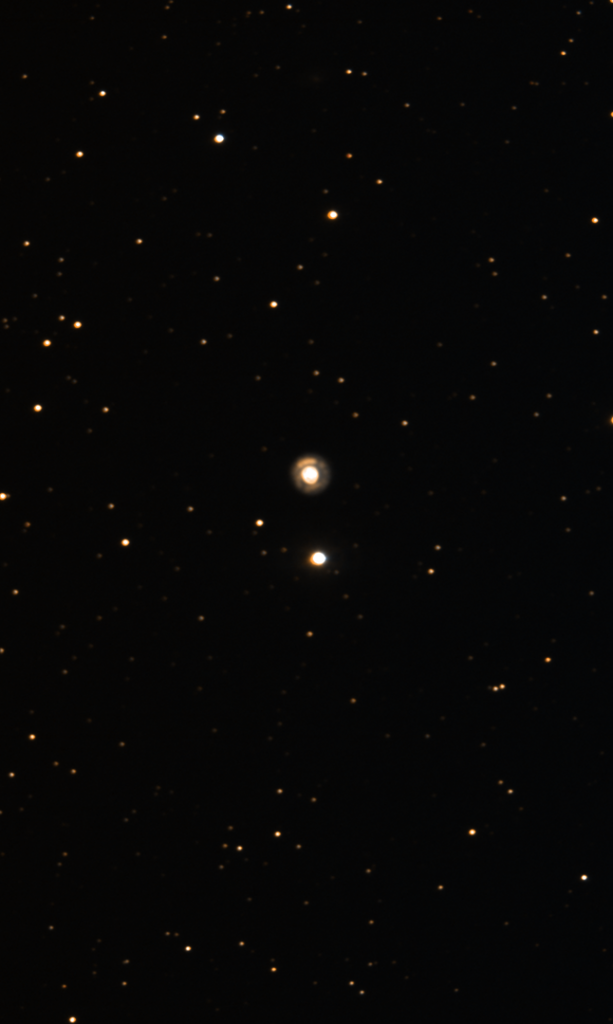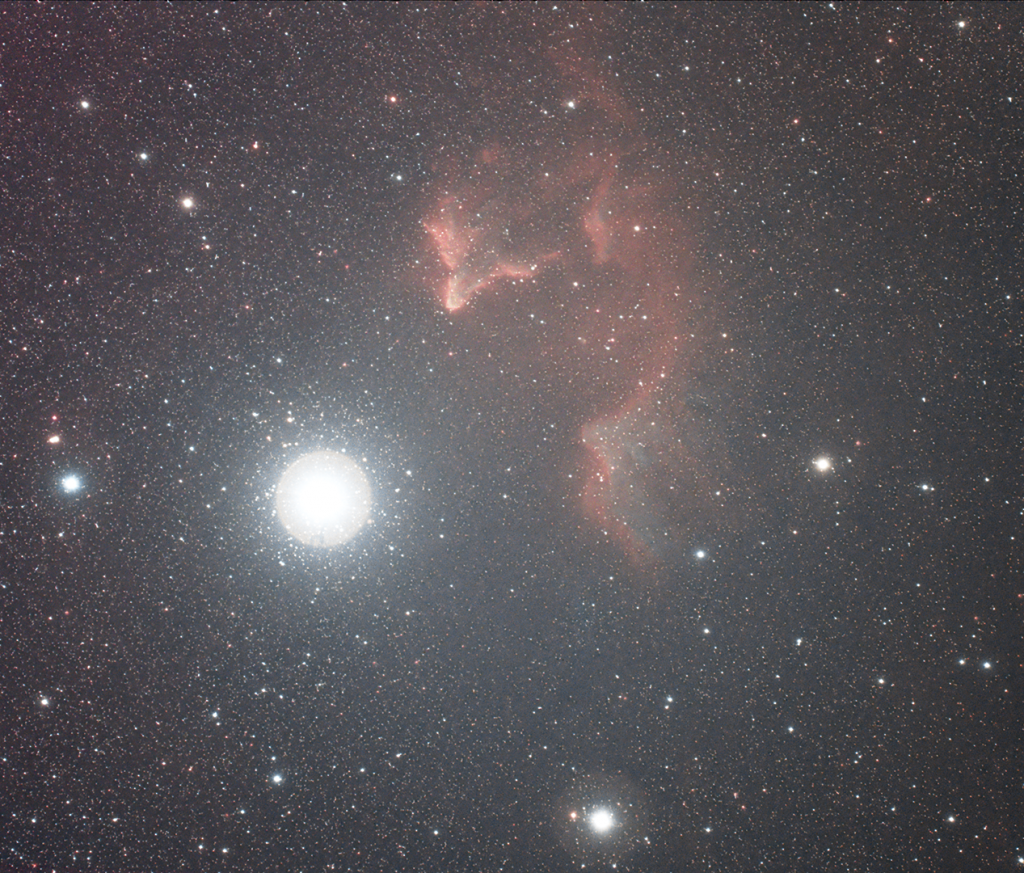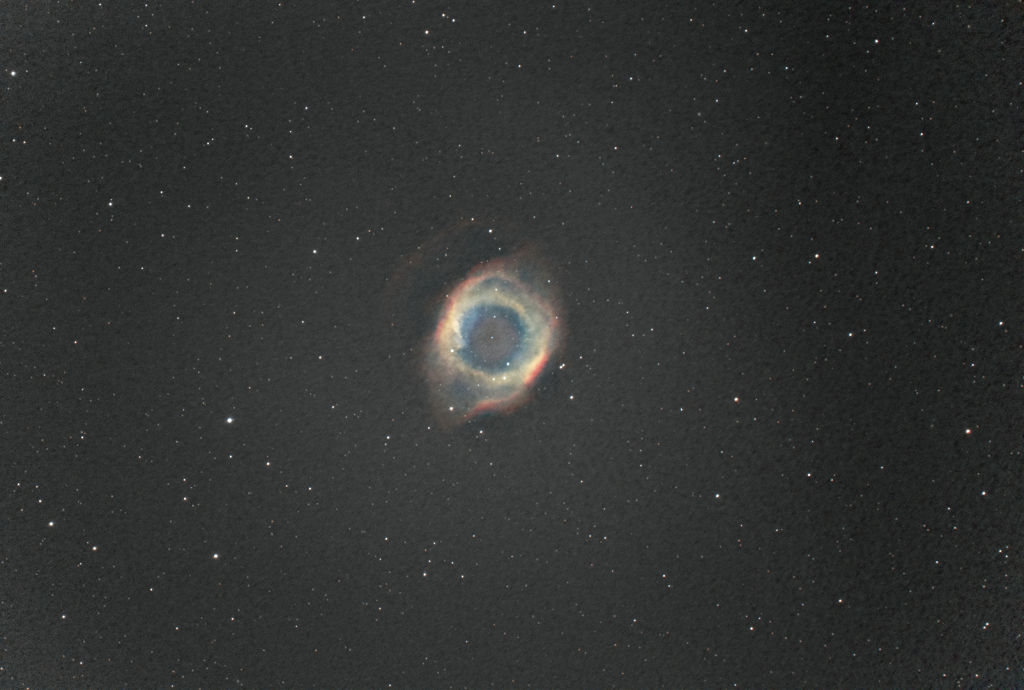In his most recent The Night Sky blog, Darrell Heath talked about NGC 2392 aka The Lion Nebula so I decided to try to image it with the RRT. It’s small (48 arcseconds) so I figured that system which is a 12″ SCT at prime focus which I think is a 3000mm focal length would be a good fit. The RRT has a monochrome camera so I used its filters to create a color composite. The alignment wasn’t perfect, the stars show some chromatic error, but the image shows the major features of this planetary nebula.



